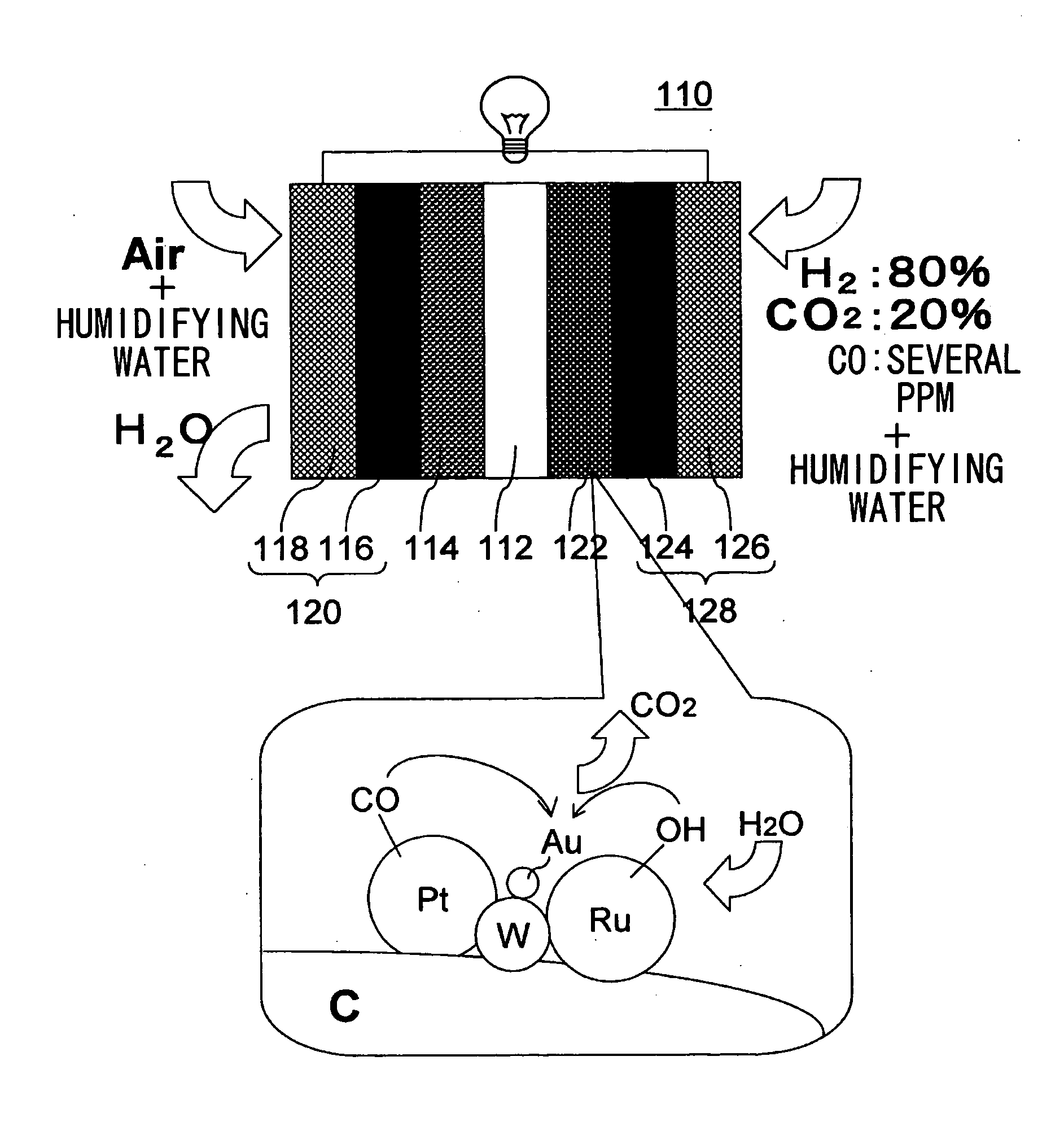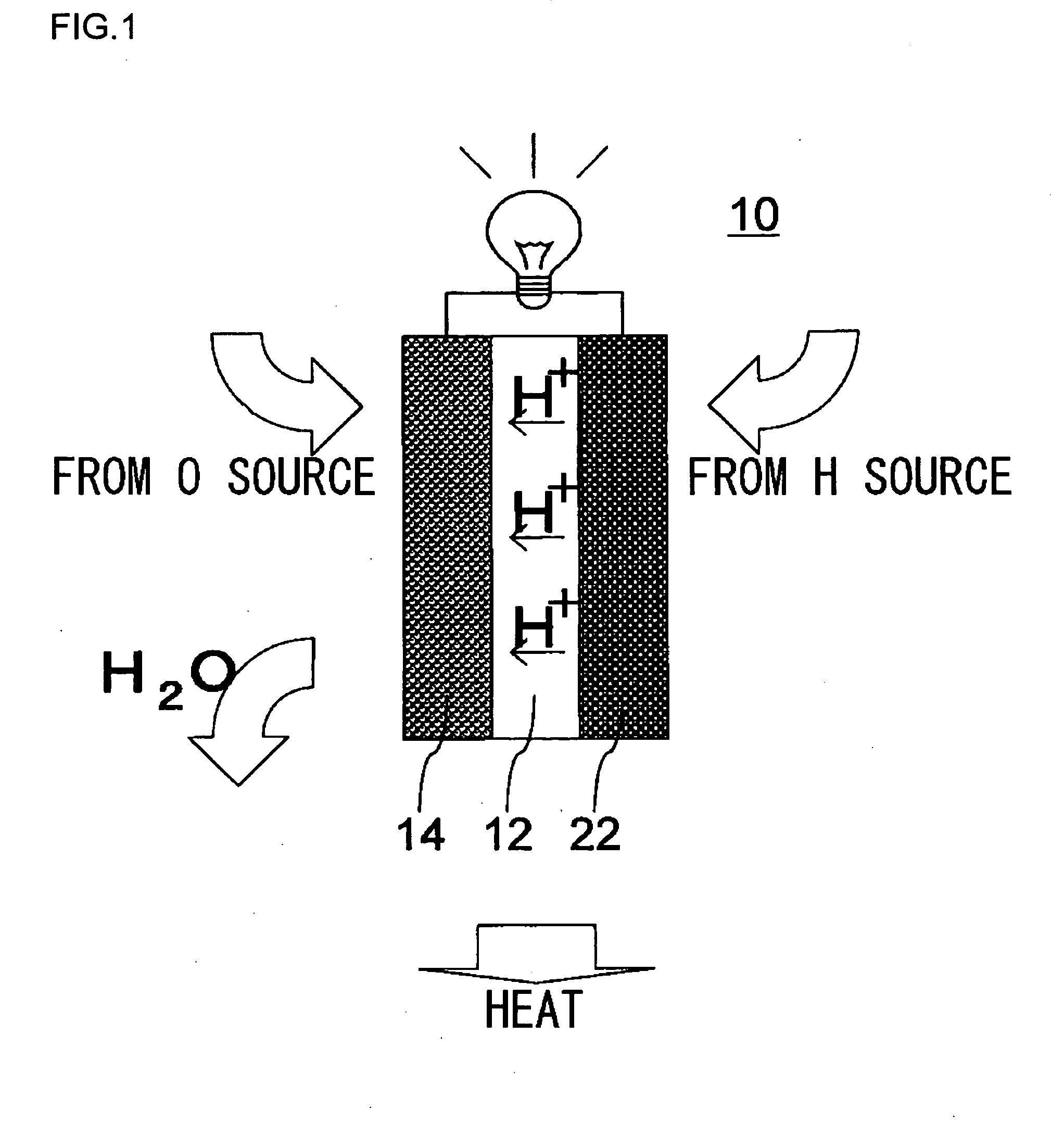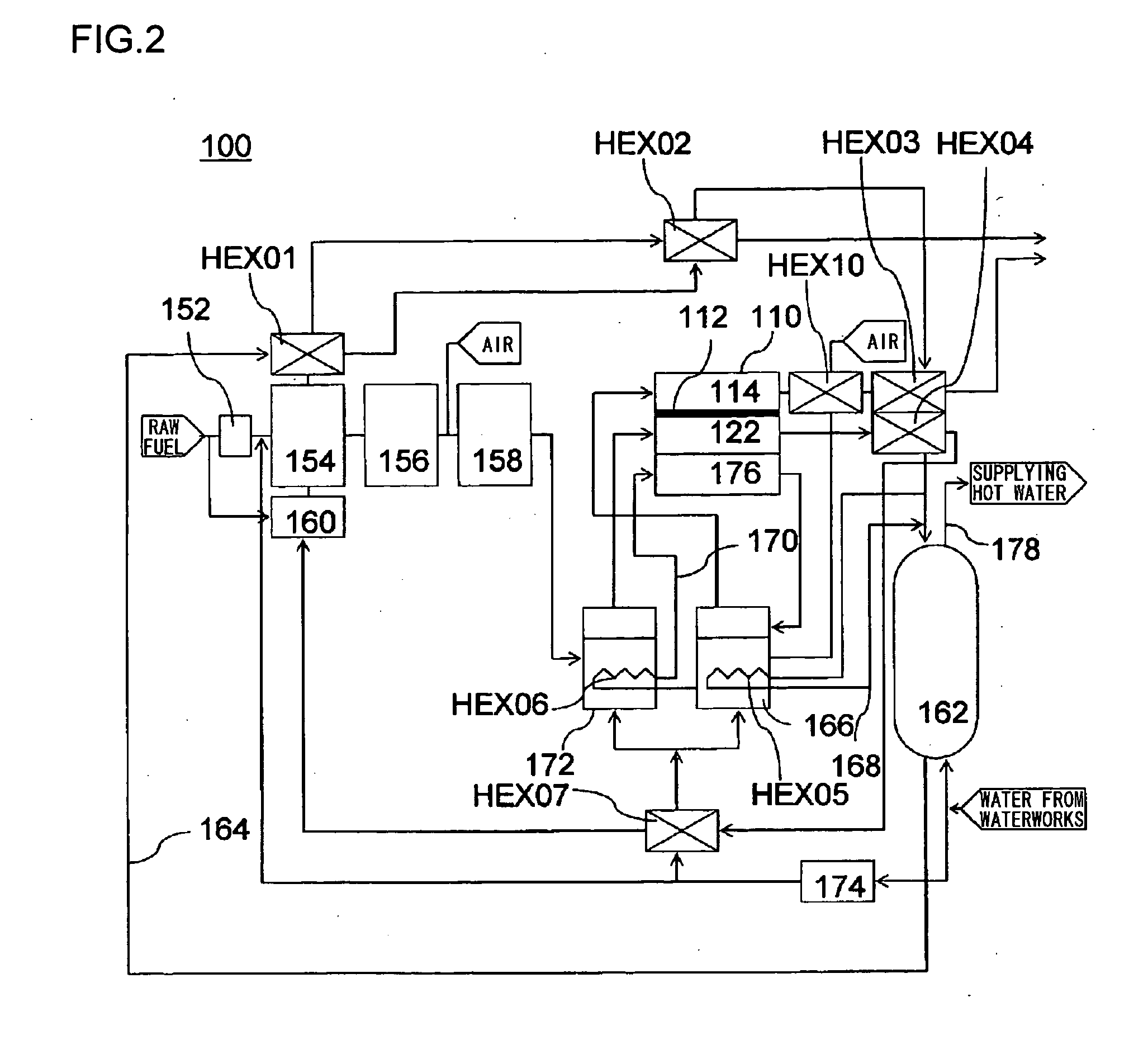Fuel cell
a fuel cell and catalyst technology, applied in cell components, electrochemical generators, fused electrolyte fuel cells, etc., can solve the problem of insufficient co resistance at the anode, and achieve the effect of improving the characteristics of fuel cells and enhancing the co resistance of catalysts
- Summary
- Abstract
- Description
- Claims
- Application Information
AI Technical Summary
Benefits of technology
Problems solved by technology
Method used
Image
Examples
first embodiment
[0032] [First Embodiment]
[0033] In this embodiment, with reference to FIG. 2, a description will be given of a fuel cell 110 employed in a domestic-use fuel cell co-generation system 100. The domestic-use fuel cell co-generation system 100 includes: a reforming apparatus which reforms raw fuel (hydrocarbon-based fuel) such as LPG or city gas and generates reformed gas containing hydrogen (fuel) in an amount of about 80%; a fuel cell 110 which generates electrical power using the reformed gas supplied from the reforming apparatus and oxygen (oxidant) in air; and a hot water storage apparatus which recovers and stores heat generated in the reforming apparatus and the fuel cell 110 in the form of hot water (water of 40° C. or higher). Thus, this system has both a power generation function and a hot water supplying function.
[0034] Normally, as safety measures in case of a gas leak, an odor is added, by use of a sulfide, to the raw fuel, such as LPG or city gas, supplied to homes. Howev...
second embodiment
[0056] [Second Embodiment]
[0057] In this embodiment, with reference to FIG. 6, a description will be given of a fuel cell 210 employed in a mobile-use fuel cell system 200. The fuel cell 210 is a direct methanol fuel cell (DMFC) in which an aqueous solution of methanol or pure methanol (hereinafter referred to as “methanol fuel”) is supplied to anodes 222 (222a, 222b, and 222c). The fuel cell 210 includes a catalyst coated membrane (CCM) 230 serving as a power generation unit and which is formed by sandwiching a solid polymer membrane 212 between cathodes 214 (214a, 214b, and 214c) and the anodes 222 without using a diffusion layer.
[0058] The methanol fuel to be supplied to the anodes 222 is supplied to a fuel chamber 254 from outside of the fuel cell 210 through a methanol fuel supply hole (not shown). The methanol stored in the fuel chamber 254 is supplied to each of the anodes 222. At the anodes 222, the reaction of methanol occurs as indicated in the chemical equation (3). Furt...
PUM
| Property | Measurement | Unit |
|---|---|---|
| particle diameter distribution | aaaaa | aaaaa |
| oxidation-reduction potential | aaaaa | aaaaa |
| oxidation-reduction potential | aaaaa | aaaaa |
Abstract
Description
Claims
Application Information
 Login to View More
Login to View More - R&D
- Intellectual Property
- Life Sciences
- Materials
- Tech Scout
- Unparalleled Data Quality
- Higher Quality Content
- 60% Fewer Hallucinations
Browse by: Latest US Patents, China's latest patents, Technical Efficacy Thesaurus, Application Domain, Technology Topic, Popular Technical Reports.
© 2025 PatSnap. All rights reserved.Legal|Privacy policy|Modern Slavery Act Transparency Statement|Sitemap|About US| Contact US: help@patsnap.com



